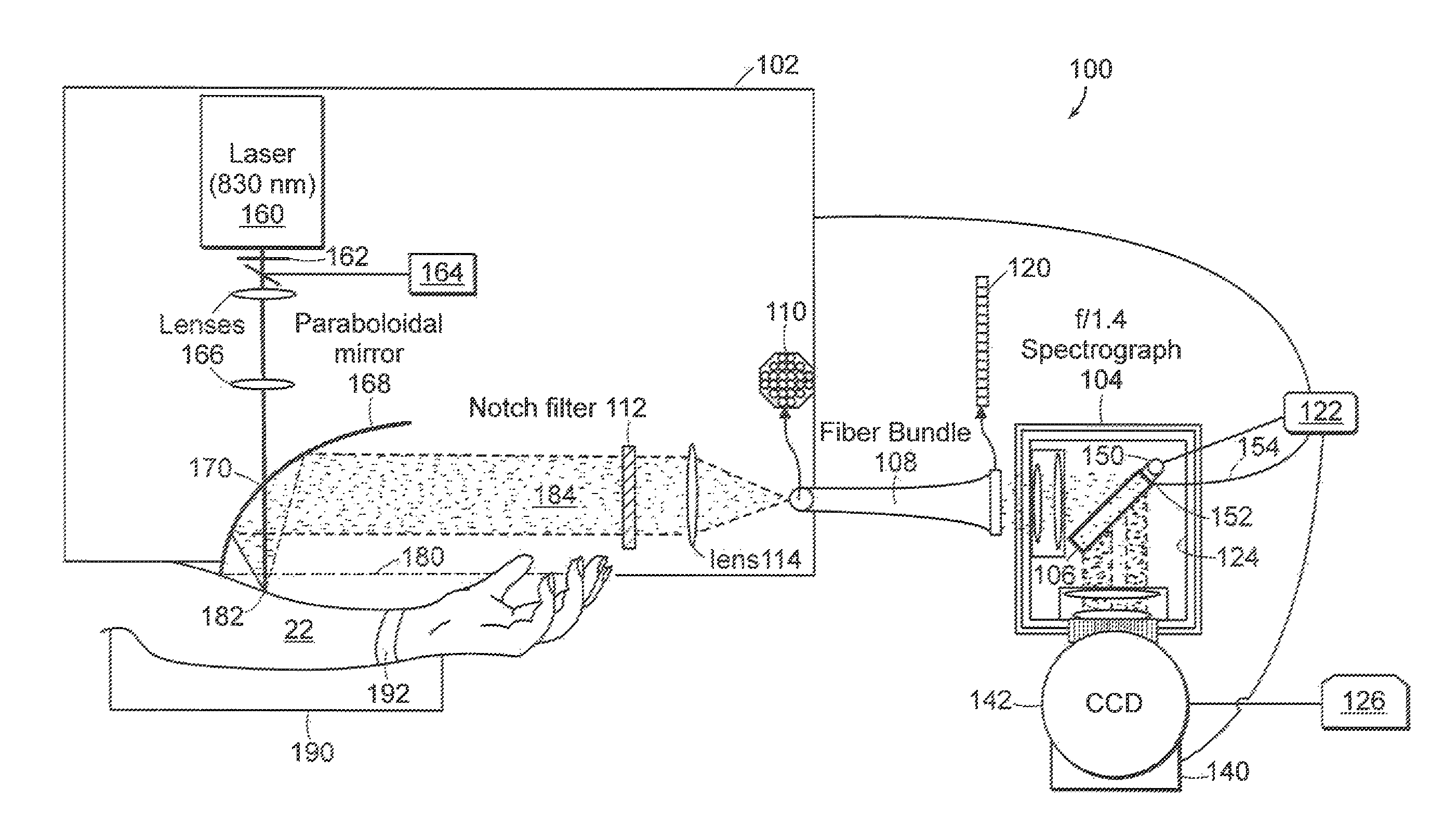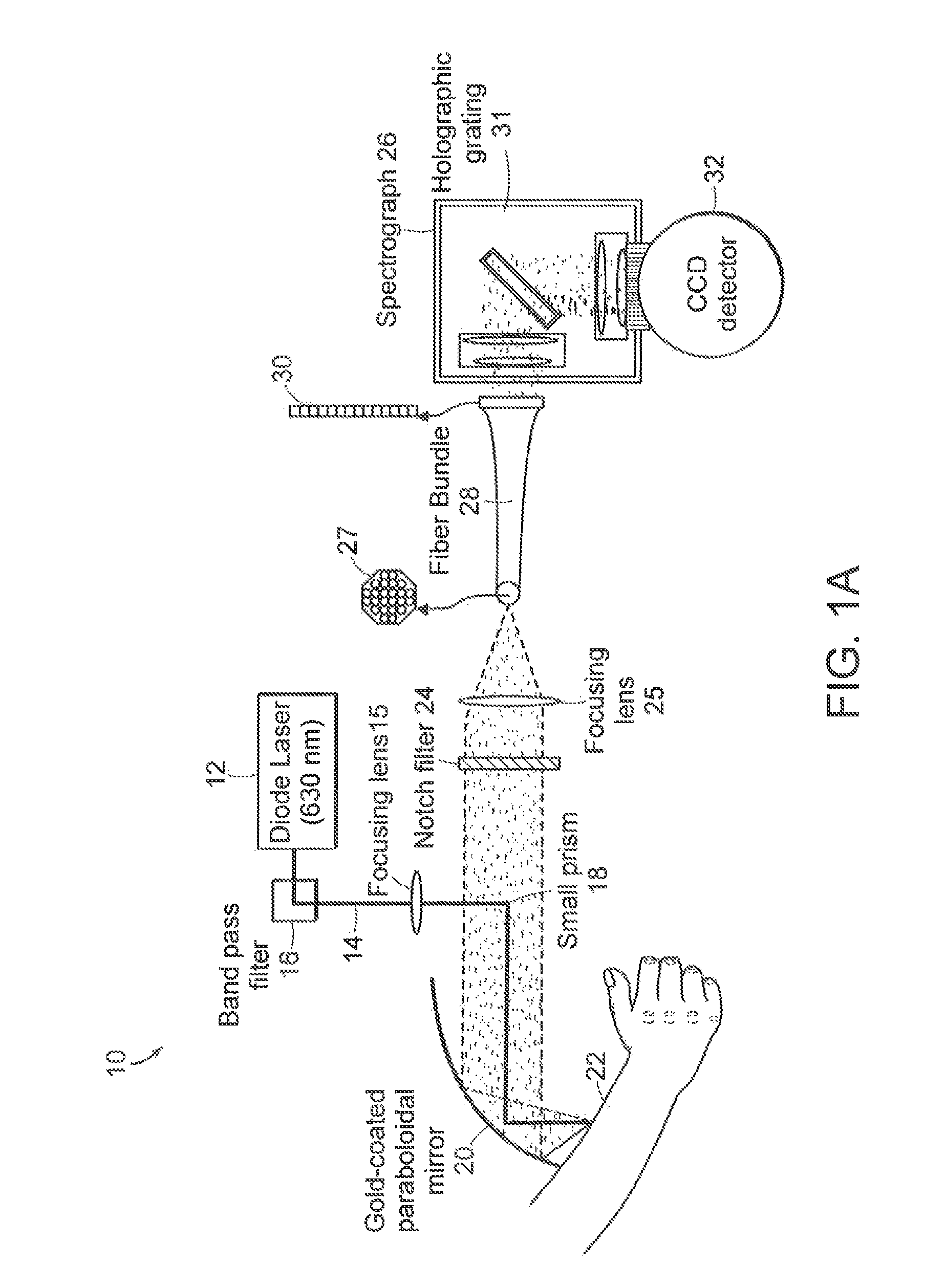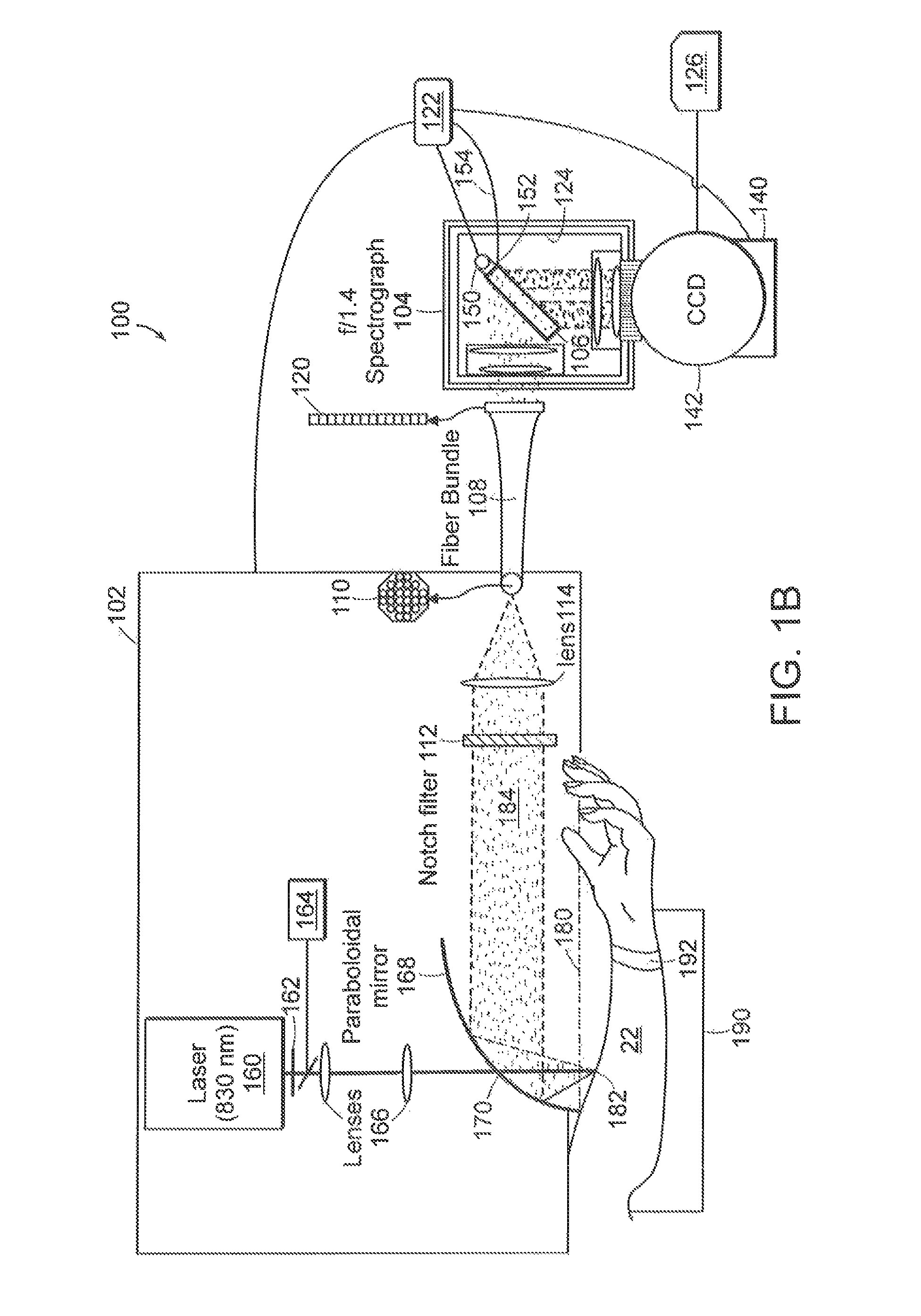Raman spectroscopy for non-invasive glucose measurements
a non-invasive, glucose-based technology, applied in the direction of optical radiation measurement, instruments, spectrometry/spectrophotometry/monochromators, etc., can solve the problems of insufficient accuracy for non-adjunctive clinical use, inability to demonstrate sufficient accuracy for non-adjunctive use, and inability to demonstrate the measurement signal from actual glucose concentrations. achieve the effect of improving the size and resolution of the imaging device, and improving the signal to noise ratio
- Summary
- Abstract
- Description
- Claims
- Application Information
AI Technical Summary
Benefits of technology
Problems solved by technology
Method used
Image
Examples
Embodiment Construction
[0021]Raman spectra were obtained using a system to collect Raman light emitted from the skin of a patient with high efficiency. The system shown in FIG. 1A used a light source 12 such as a 830 nm diode laser (PI-ECL-830-500, Process Instruments, Salt Lake City, Utah) as the Raman excitation source. The beam 14 was passed through a bandpass filter 16 (Kaiser Optical Systems, Ann Arbor, Mich.), directed toward a paraboloidal mirror 20 (Perkin Elmer, Azusa, Calif.) by means of a lens 15 and a small prism 18, and focused onto the forearm 22 of a human subject with an average power of 300 mW and a spot area of ˜1 mm2. Backscattered Raman light was collected by the mirror 20 and passed through a notch filter 24 (Super Notch Plus, Kaiser Optical) to reject the backscattered Rayleigh peak and the specular reflection at 830 nm. The filtered light was transferred to a spectrometer (Holospec f / 1.4i or f / 1.8i, Kaiser Optical) by means of a lens 25 and an optical fiber bundle 28 (Romack Fiber O...
PUM
 Login to View More
Login to View More Abstract
Description
Claims
Application Information
 Login to View More
Login to View More - R&D
- Intellectual Property
- Life Sciences
- Materials
- Tech Scout
- Unparalleled Data Quality
- Higher Quality Content
- 60% Fewer Hallucinations
Browse by: Latest US Patents, China's latest patents, Technical Efficacy Thesaurus, Application Domain, Technology Topic, Popular Technical Reports.
© 2025 PatSnap. All rights reserved.Legal|Privacy policy|Modern Slavery Act Transparency Statement|Sitemap|About US| Contact US: help@patsnap.com



